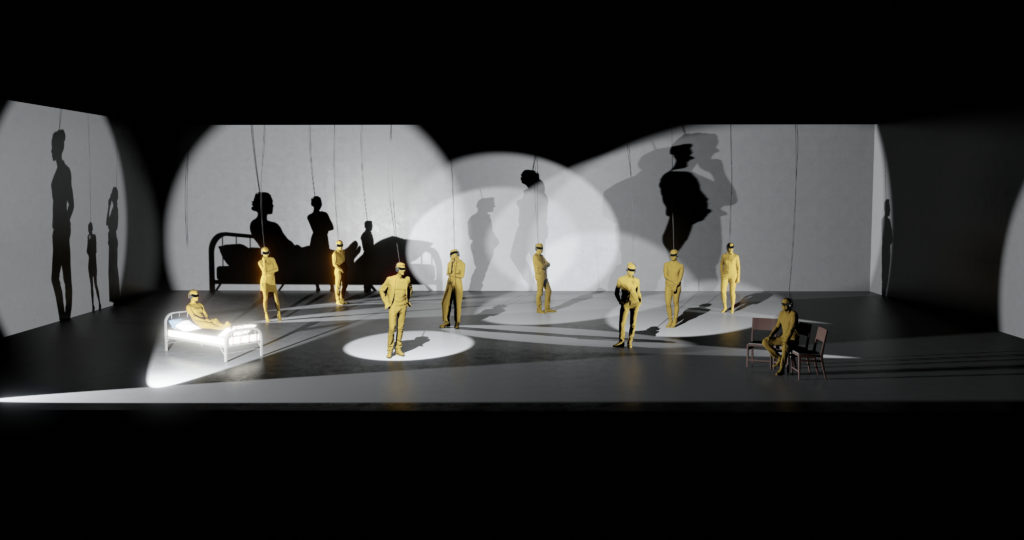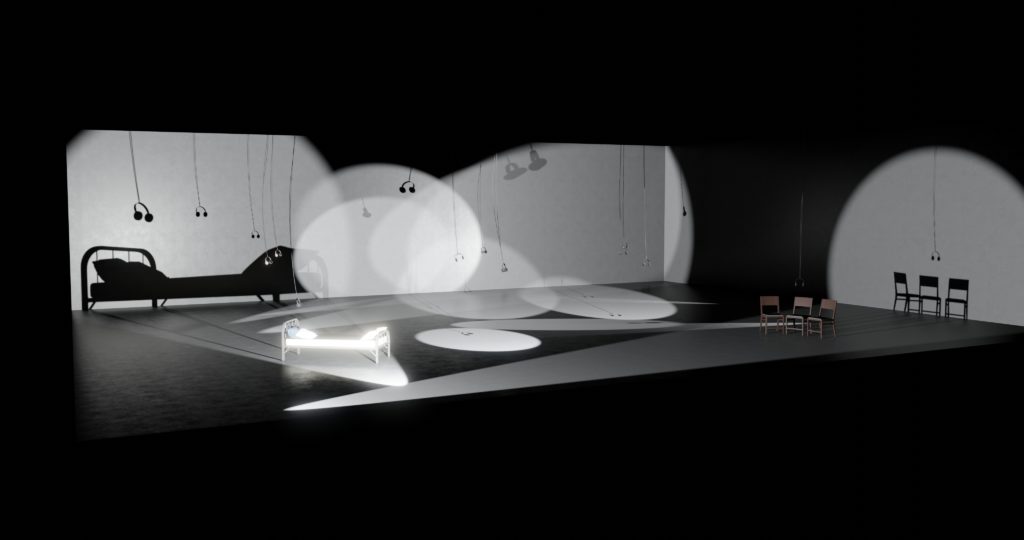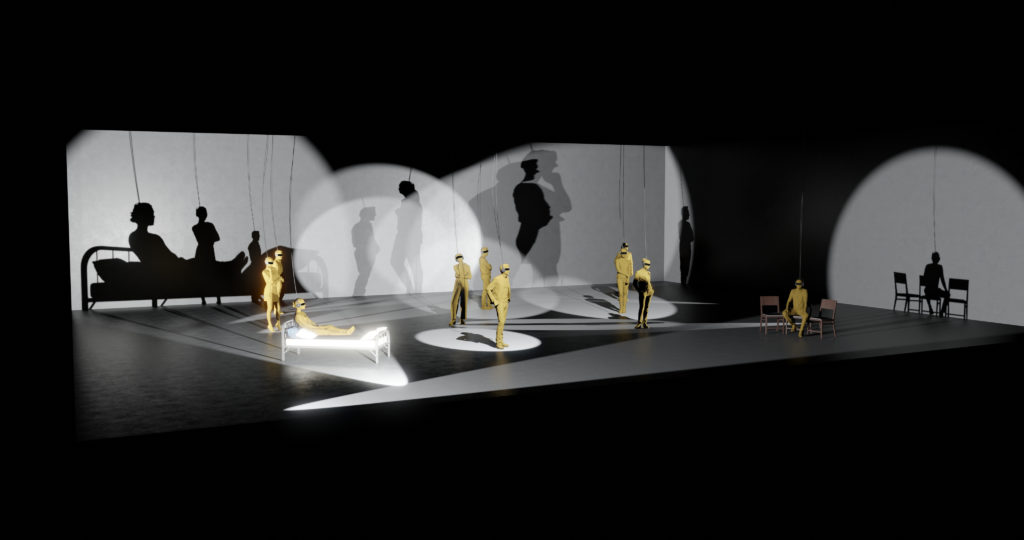Abandonment Series & Performative Installation.

The project is an open exploration – acoustic, narrative, musical, verbal, poetic and spatial. The experimental artistic exploration of places and people, atmospheres and moods, trust, vulnerability and exposure, perception and imagination explores interpersonal as well as human-environment relationships. A phenomenal psychogram. That can be walked-in. A shared experience. Impossible to refuse participation. Those who enter the room participate.
Bubbles of perception cast shadows, overlap, create something new, detain, isolate, enable encounter and interaction, complexity of life, ambivalence, simultaneity, and parallel worlds. A puppet theater. Marionettes – guided by the experiences of a voice in their heads. Bodies reacting to verbalized perception. Shadow theater. How does the shadow relate to the body? The shadows stand for the dark side of life. Experiences, memories and conditions that most prefer to hide. But they are always present, accompanying us and often interacting subconsciously with the shadows of other people. This has its own beauty, a life of its own. What happens inside the other person, what he or she reacts to, remains inaudible, but can be sensed through close observation of the shadow theater. Every approach means participation in the shadow theater.
idea, concept, implementation
Carina Pesch
voice
Carina Pesch
funding
City of Leipzig (conception), Cultural Foundation of the Free State of Saxony (implementation)
The Material
To generate the material the artist asked numerous people to abandon her. Blindfolded. Wired with microphone and recording device. Disoriented. Curious. Clueless. Wherever she was abandoned, she remained for 30 minutes. Enduring the unknown. Breathing. Exploring. Holding on to her own voice. Describing everything. Her impressions immediately became spoken words. Unfiltered. Automatic speaking (invented by Antje Vowinckel). Speaking without pause. Stream of Consciousness. What lies behind the veiled world?
Using acoustic, tactile and olfactory cues as a guide, La Pesch slowly formed images, atmospheres and a sense of place. The free flow of speech created poetic images, puns, condensations and was further rhythmized and condensed in the composition. Field recordings from the abandonment sites complement the spoken words. They contrast the blind and naïve imaginings of each place with the seen and heard reality. The two layers of sound explore boundaries between fiction and reality, between perception and imagination.
The Participation
Visitors to the performative sound installation decide at the entrance whether they want to observe by seeing or experience by listening. Both become part of the artwork. For art is created in the experience.
The listeners experience: A stranger hands them a blindfold. Blindfolds them. Darkness. A supportive shoulder guides them up front. Unsteady steps. Not to lose the connection. Silently, they are led to a spot in a reverberating room. A pair of headphones lands on their ears. Standing, sitting, lying – in the empty, dark room. Following the artist’s voice with their imagination. Listening to the composition of an abandonment. Experiencing. Reacting. Until there is silence. Then taking off the blindfold. Blinking. Looking around. Becoming observers. Perhaps experiencing again. Another abandonment. Another place. The different compositions have different lengths. So there are different times of taking turns.
The observers see: A wide, gray and mostly empty hall. Dramatic play of light and shadow. Some objects. Headphones hanging from the ceiling. Ten listening participants are led into the room blindfolded. And are placed under a pair of headphones. Apparitional. Reacting. Laughing. Shaking. Distorted faces. The shadows magnify the reactions. Interaction and encounter between the listening participants happen by their shadows. The observers are allowed to approach. To move around. Without touching. Taking close looks at the faces. Interacting with the shadows. Again and again a person in the room takes off the blindfold. Reorients him- or herself. A new person takes the empty place under the headphones. Experiences again. Reacts – perhaps in a completely different way. The performance continues until the last person has left the room.
supported by



